India’s energy sector and especially oil has been in the headlines recently quite a lot.
- First-ever shipment of US crude oil to India arrives at Odisha’s Paradip Port on Oct 2.
- India Energy forum took place in New Delhi from Oct 8-10.
- India to surpass China as fastest growing oil market in 2018: Moody’s – link
Apart from these, Indian Oil ministry made a statement to OPEC that India has other buying options, to demand more competitive pricing of oil especially in a bear market prevailing now. This is bold considering OPEC accounts for 86% of crude oil, 75% of gas and 95% of liquefied petroleum gas (LPG) that India imports.
Context of Oil
Energy is the catalyst for anything in this world and a quick look at world energy consumption reflects the importance of Oil
Expectedly the reliance on coal is reducing and the share of renewable sources is increasing. I’m sure environmentalists and many global leaders would want this transition to happen faster.
Geo-political scenarios have led to major changes in the Oil movements & pricing in the last 3 years
- US have become the top Oil producing nation in the world extensively pushing its shale oil production from 2011. This resulted in reduced import from Middle East & increased captive consumption.
- China’s demand for oil reduced as well. With reduced demand from US & China for imported oil, spotlight was on Saudi Arabia & Russia which were the top 2 Oil producing & exporting nations. They did not want to give up their market share in production and continued producing oil at same rate resulting in excess supply.
- Increased supply has reduced the oil prices substantially & hurt most of the oil exporting countries and tides have turned for Oil importers to dictate terms.
- Special mention about Venezuela – Since the Oil reserve discoveries in 2008 & later in 2010 that put Venezuela on top of the world oil reserves, it is undergoing severe political unrest. With reduced oil prices it is facing huge economic turmoil as its economy almost completely relies on Oil Exports.
- Russia & China are actively lending financial support to Venezuela and supposed ‘Oil-for-Loan’ deals are in place. Interestingly Venezuela’s export to India once quite substantial have almost bottomed and limited only to Essar Oil refinery now owned by Rosneft (Russia)
OIL GEOGRAPHY– Top Producers, Exporters, Importers & Consumers
INDIA in the Oil Game
India has moved up to Third spot in global energy as well as oil consumption. It is not a surprise considering the population. In the bearish oil market India is the major attention grabber with high annual growth of demand for oil
[Important to note is India’s low per capita energy consumption (It is estimated at 0.5 Mtoe (million tonne oil equivalent) per million people compared to ~ 1.1 Mtoe for whole of Asia and ~1.5 Mtoe for the world) indicating the scope & opportunity available]
India does not have material Oil Reserves therefore; significant proportion of requirement is imported.
India is very smart & aggressive in this game now. It is strategizing and actioning on multiple fronts. Some of the key highlights are:
- The direction of imports is changing with introduction of new import sources and hard negotiations with existing sources. Importing from US & bold message to OPEC is all part of this strategy. Leveraging the increase in production in Iraq & Iran through effective partnership, India is reducing dependency on Saudi oil. Increased attention is given to African sources like Nigeria as well and active negotiations are in place.
- Favourable pricing are being offered to India. Gulf countries are eliminating the ‘Asian Premium’ that was additionally charged on exports to Asian countries. Few of the Saudi exporters are shipping in own tankers reducing transportation cost for Indian importers.
- Strategic Reserve stock pile up is being planned & executed meticulously. Capacity addition in Odisha & Rajasthan has been budgeted. Existing caverns in Mangalore, Vizag & Padur are being put to better use. Exclusive MOU has been signed with UAE for ring fenced supply to Mangalore facility.
- Global Investment is encouraged with favourable climate. Saudi Aramco which is world’s biggest oil company is very bullish and aggressive in its India vision. The CEO of the company was in India recently and had discussions with ministry and energy companies’ top management for creating fully integrated business in India and also for partnering. There are rumours that Saudi Aramco is exploring sponsoring IPL next year. The Essar oil acquisition by Rosneft (from Russia) is another example.
India could do better in enhancing refining capacity to match with increasing oil demand. Riding on the back of world class oil refining facilities India has emerged as net exporter of Gasoline, Jetfuel & Diesel. This is significant from balance of trade perspective.
This situation could change soon as domestic demand will take up the entire output from refining leaving very little for export. Further the import of oil products might increase.
If not Oil – What next?
I will start by saying that globally we are nowhere close to a realistic situation of not depending on Oil. Oil has lost some glamour temporarily to ‘Big data – Machine Learning – Artificial Intelligence – Block chain’ but Oil is still the Emperor. Delving into the alternate options;
World needs energy and it is primarily derived from Oil, Coal & Natural Gas.
Coal is a big environment nuisance and transition away from Coal will happen but it is not that straightforward.
China & India account for almost 62% of World coal consumption. From an Indian perspective the Coal lobby is quite strong and there is abundant coal reserve in India (Reserve to Production ratio of ~140 years). Further, electrification of India is a big agenda. With Coal being the biggest source for power generation Coal consumption reduction is not easy and is a real long term vision
Natural gas
Natural gas is the easier alternative with widespread global adoption & sustainable supply. However, India’s policy framework involving pricing and infrastructure needs to further evolve for Natural gas to materially replace oil. India’s domestic production is declining and imported natural gas is not cost effective. Fertiliser & Power sector fights for domestic natural gas and fertiliser sector often wins the battle. Power sector is left to rely almost solely on imported Natural gas and hence they prefer cheaper Coal. In a cheaper oil scenario Petcoke is emerging a viable alternative to coal for power sector instead of Natural gas
In the recent past a lot of strides have been made to correct this scenario both in the demand & supply side. Optimising the LNG Capacity utilisation is also key. We have a lot of capacity underutilisation resulting to financial distress.
TAPI Pipeline (Turkmenistan-Afghanistan-Pakistan- India) & Deep sea gas pipeline from Middle east (SAGE) when completed will be a key game changer
Other Renewable Sources
India is pushing hard in this direction. The support & focus from the top is very conducive.
It is a key sector identified in the ‘Make in India’ program. It has set a target of 175 GW of renewable energy capacity with specific attention to Solar & Wind.
India held a specific event in 2015 for renewable energy & got almost $200bn of investment commitment. These included large investments into solar and wind power by companies such as SunEdison Energy, ReNew Power, and the Adani group.
Solar & Wind energy
Solar & Wind energy is expected to take over materially from Coal and dominate electricity generation by 2040. Utility scale solar plants with battery storage capability which would be world class is being planned by NLC India in Andaman islands and commissioned by mid 2019.
Rooftop Solar PVs will see a major thrust. Budget of INR 5,000 crores has been approved for implementation of grid connected rooftop PVs in the next 5 years. Soon banks might make it a mandatory requirement for granting housing loans for new units.
The cost of Solar electricity in India is reaching the same levels as cost of electricity from Coal. This is a major deal maker. The major drivers for this are:
(A) reduced prices of PV panels (Photovoltaic), the core ingredient of solar power plant
(B) Central Government establishing a payment security system so that Solar power suppliers are not abused by state electricity distributors & most importantly
(C) Establishment of REVERSE AUCTION SYSTEM and competition acting in full swing
I’m personally not a fan of reverse auction system at this phase as the impetus should be more on combination of establishing trust, ecosystem, quality & efficiency and not just cost. This has resulted in setback in capacity additions in the last few months.
Further experts opine that the cost quoted like INR 2.44 / 2.62 per kWH in recent blocks of reverse auction is not sustainable & the expected minimum cost should be in the range of INR 4.5-5 per kWH. This indicates that a few Solar & wind energy producers are going to burn their fingers and government will struggle to meet its 2022 target
India is well positioned to meet its Wind energy capacity creation targets. India is now 4th in the world in terms of wind energy capacity behind US, China & Germany. To further boost this segment, the National Off-Shore Wind Energy Policy 2015 was announced to facilitate offshore wind farms in the territorial waters of India.
Renewable energy has been re-classified as ‘white category.’ Previously, this sector was under ‘green category’ and the re-classification will enable ease of doing business as setting up of solar and wind power plants will be exempt from seeking environmental clearances from Ministry and consent from State Pollution Control Boards
To meet the rising demand and manage the gaps in capacity of trained manpower, the Government in May 2015 set a target of achieving 50,000 “SuryaMitras” of skilled manpower in solar energy sectorby2019-20
Transportation upgrade
NITI AAYOG & Rocky Mountain Institute (USA) partnered to look at “Transformative Mobility Solutions for India.” It is a blue sky effort to provide vision & indicative direction. It estimates 64% reduction in mobility related energy demand (Diesel & Petrol) by 2030 through improving public transportation, electric vehicles & re-designing city designs
The Government launched FAME (Faster Adoption and Manufacturing of Hybrid and Electric Vehicles) India Scheme on 1st April, 2015 with the objective to support hybrid/electric vehicles market development and manufacturing ecosystem. However, this is not doing great as only diesel mild hybrid varieties have been sold which does not result in material reduction in fuel consumption
Root cause needs to be addressed which presents itself as barriers in the form of efficiency of batteries, driving range, engine capacity, charging time, battery charging infrastructure. Li-Ion battery is expensive and almost fully imported making cost of manufacturing very high.
Electric vehicle adoption has not been great in India but personal auto ownership in India is not material enough. Creation of electricity based mass public transport is a great opportunity.
However better batteries will prove to be material alternate source for domestic electricity in the next 10-15 years and expect to complement with Solar (rooftop PVs) very well. This is a gold mine of an opportunity.
End Note
Energy management is a key agenda for any country and an essential pillar of governance. I think India is in positive trajectory. Oil price could be low today and expected to be in this range till end of 2018. But OPEC is already taking steps to correct the supply scenario and price could / would go up.
When that happens, India’s oil management is expected to keep us in a better place and not materially exposed to the negativities.
What is even more encouraging is how proactive we are in the renewable energy space. India is gifted with high amount of natural energy sources. With right direction & sustained effort India will be in driving seat
Energy sector will continue to see lot of activity and infrastructure build up. Policy framework continues to evolve and streamline. Market pricing regime would be established across reducing the subsidy culture.
I’m eagerly waiting to see the day when all our roof tops will be beautified by Solar PV panels & India moves in effective electric dominated public transport

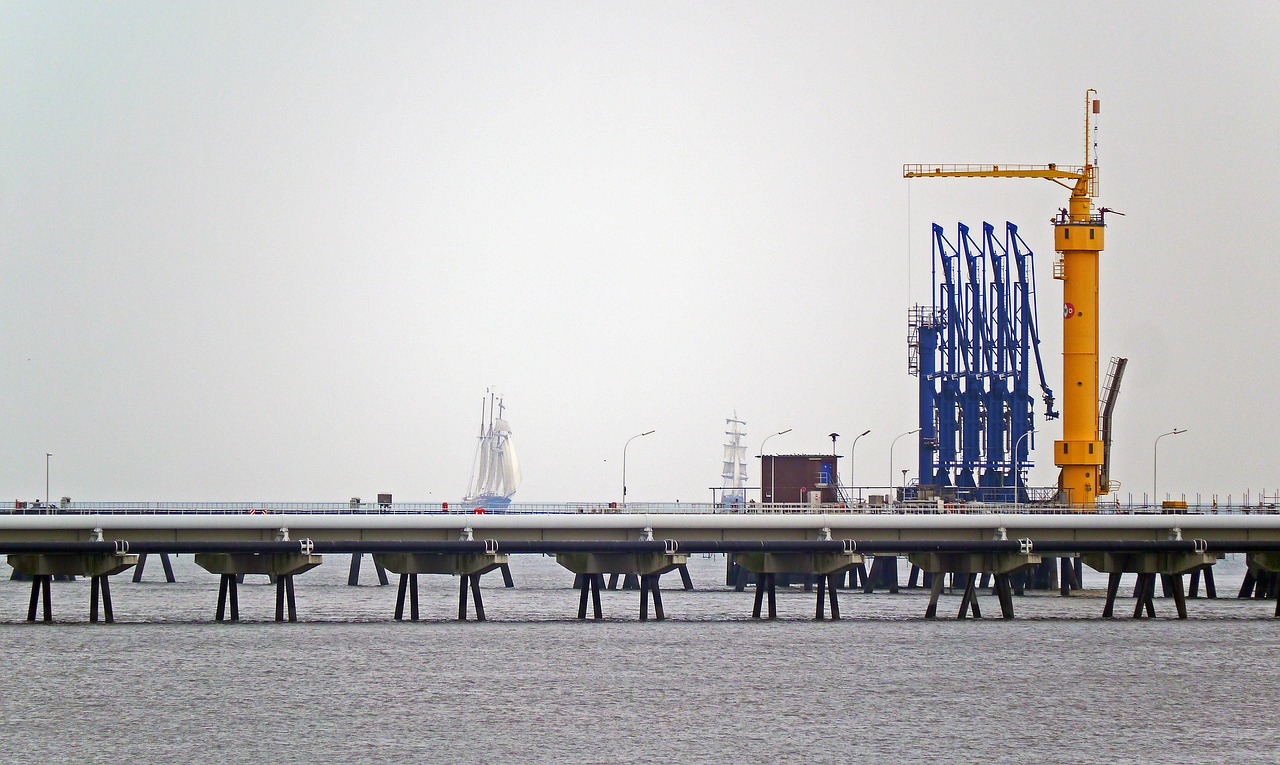
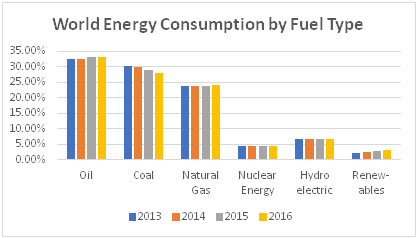
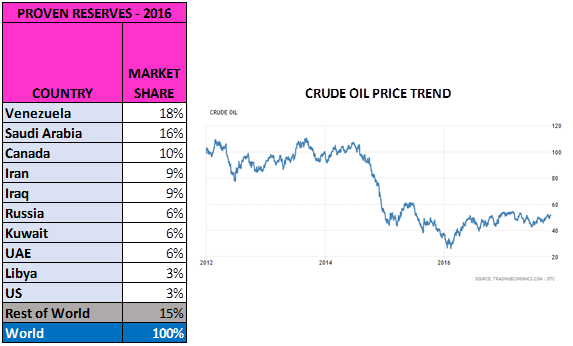
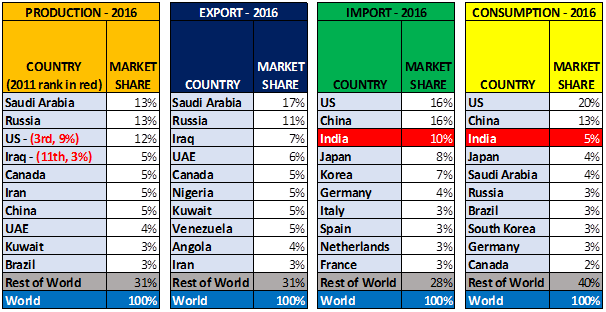
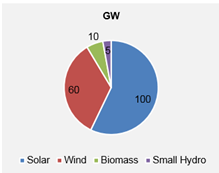












Pingback: Crude Oil Price Bull Run Is Here To Stay?
Pingback: Saudi Crisis Impact on Global Markets and Oil Price